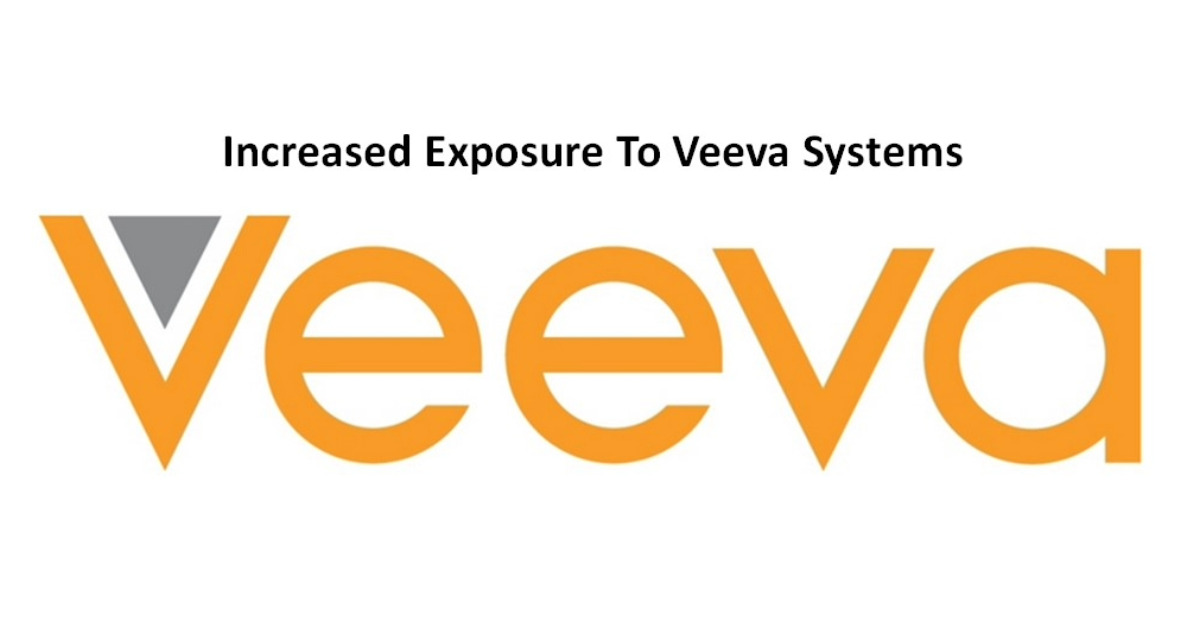Contents

In my March 21 post, I disclosed the addition of Veeva Systems (VEEV) to the FFJ Portfolio.
When I wrote that post, I had recently returned from a ski trip. Shares were trading at ~$230 and I deemed shares to be at the top end of fair valuation. I, however, had initiated a 100 share position on March 1 @ ~$219.81 in a 'Core' account within the FFJ Portfolio. Using this purchase price and management's FY2025 adjusted diluted EPS guidance of $6.16, I determined the forward adjusted diluted PE to be ~35.7.
VEEV's valuation using the current broker estimates at the time and my purchase price were:
- FY2025 - 24 brokers - mean of $6.15 and low/high of $6.05 - $6.19. Using the mean estimate, the forward adjusted diluted PE is ~35.7.
- FY2026 - 21 brokers - mean of $6.81 and low/high of $6.23 - $7.09. Using the mean estimate, the forward adjusted diluted PE is ~32.3.
- FY2027 - 8 brokers - mean of $7.65 and low/high of $7.04 - $8.30. Using the mean estimate, the forward adjusted diluted PE is ~28.7.
I stated that if the historical FCF and adjusted diluted earnings are an indication of what to expect in FY2025, FCF should once again exceed adjusted diluted EPS. VEEV's forward valuation based on FCF/share, therefore, should be somewhat better than the FY2025 forward adjusted diluted PE of ~35.7.
I concluded my March 21 post stating:
Given my long-term outlook, I hope to periodically add to my VEEV exposure when I deem its valuation to be attractive.
The following have occurred subsequent to my March 21 post.
Chief Financial Officer (CFO) Departure
On April 1, VEEV announced the departure of its CFO (Brent Bowman) who had been serving in the position for over 3 years.
The unexpected news has resulted in recent pressure on VEEV's share price. With this announcement, the company reiterated first-quarter and full-year guidance that it provided during its February 29 earnings release.
Bowman's exit is not the result of any misconduct or disagreements over financial results or accounting principles. In fact, he will remain an employee for three months to ensure a smooth transition.
During the search for a replacement, Tim Cabral, VEEV’s 2010 - 2020 CFO, will serve as interim CFO. Given Cabral's decades of experience and knowledge (he has also served as a board member since January 2022), I am not concerned about this recent announcement and believe the transition will not come with any significant operational disruptions.
Veeva Vault CRM
In my December 26, 2023 post, I discussed VEEV's product/service offerings and the changes taking place.
On April 1, VEEV announced that Vault CRM is now the go-forward solution for new customers; a number of early adopters are live on the new platform. The overall progress to migrate customers to the Vault CRM appears to be progressing well and I remain confident VEEV will become a better company once it is no longer reliant on Salesforce (CRM) for its product offering.
Valuation
On April 9, I increased my exposure to Veeva Systems with the purchase of 100 shares @ $213.66 in the same 'Core' account within the FFJ Portfolio through which I purchased shares on March 1; my total VEEV exposure is now 200 shares.
The brokers have not changed their forward adjusted diluted EPS estimates from the time of my last post. VEEV's valuation is now:
- FY2025 - 24 brokers - mean of $6.15 and low/high of $6.05 - $6.19. Using the mean estimate, the forward adjusted diluted PE is ~34.7.
- FY2026 - 21 brokers - mean of $6.81 and low/high of $6.23 - $7.09. Using the mean estimate, the forward adjusted diluted PE is ~31.4.
- FY2027 - 8 brokers - mean of $7.65 and low/high of $7.04 - $8.30. Using the mean estimate, the forward adjusted diluted PE is ~28.
Final Thoughts
VEEV is certainly not inexpensive. The company, however, is growing rapidly with FY2024 annual revenue of $2.364B versus FY2020 annual revenue of $1.104B.
The company generates strong Operating Cash Flow and Free Cash Flow and at FYE2024 (January 31, 2024) it had cash and cash equivalents plus short-term investments totaling ~$4.028B. In contrast, it had TOTAL debt of ~$1.266B of which ~$1.050B was deferred revenue (funds received from clients before services have been provided).
While annual CAPEX is negligible (typically under $26 million annually), R&D expenses are significant. In FY2022 - FY2024 they amounted to $0.382B, $0.52B, and $0.629B. Nevertheless, VEEV generates impressive Free Cash Flow (FCF). In FY2015 - FY2024 it generated (in millions of $) 41, 58, 137, 222, 311, 437, 551, 764, 780, and 885 of FCF.
The company does not distribute a dividend and its share count has increased from 144 million shares in FY2015 to 163.5 million shares in FY2024. This might dissuade some investors from remotely considering VEEV as a potential investment.
I recommend investors not fixate on dividend metrics but rather look at a company's total potential investment return. Based on my analysis, I envision VEEV being a much more valuable company several years into the future. I intend to continue to add to my exposure when appropriate.
I wish you much success on your journey to financial freedom!
Note: Please send any feedback, corrections, or questions to [email protected].
Disclosure: I am long VEEV.
Disclaimer: I do not know your circumstances and do not provide individualized advice or recommendations. I encourage you to make investment decisions by conducting your own research and due diligence. Consult your financial advisor about your specific situation.
I wrote this article myself and it expresses my own opinions. I do not receive compensation for it and have no business relationship with any company mentioned in this article.

